Abuna Yemata Guh, A 5th Century Church at Ethiopia
@ Asim Deb
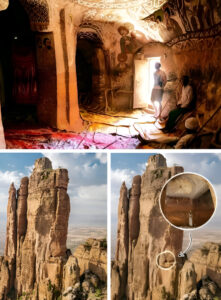
Abuna Yemata Guh is a monolithic church in a cave with an incredible view of the landscape around, at the Hawzen Woreda of Tigray Region, Ethiopia, that was built and named in honour of one of the Nine Saints of the Ethiopian Church, Abuna Yemata, in recognition of his work in spreading Christianity around the country during late 5th Century. The Nine Saints are traditionally believed to have originated from Rome, Constantinople and Syria during the end of fifth and beginning of sixth centuries. The church has been carved from the inside out and has earned the nickname “Rock-Hewn” Church. The church is notable for its spectacular location, its architecture and dome dating back to sixth century, and all its 15th century wall paintings. The church is one of the “35-odd rock-hewn churches comprising the largest concentration anywhere in Ethiopia. (** A monolithic church, also known as a rock-hewn church, is a building excavated or carved from a single block of stone, typically from a natural rock formation. The term “monolithic” comes from the Greek words “mono” (single) and “lithos” (stone), referring to the single block of stone from which the church is created). The church is a testimonial to the ingenuity and devotion of its builders, and its remote location adds to its already obvious spiritual significance. The church’s frescoes provide valuable insights into the art and iconography of early Christianity in Ethiopia.
This cave church belongs to the Ethiopian Orthodox denomination, with which roughly 50 per cent of the Ethiopian population identify.
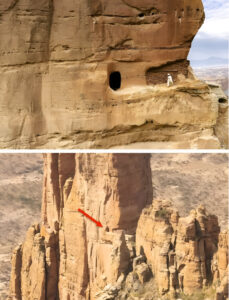
It is not known why the saint chose such a remote location, however historical accounts from the time report widespread persecution of Ethiopians of the then Christian minority, so many speculate he was evading enemies and capture. Others claim Yemata was seeking solitude and isolation from the world, seeking a place of meditation and reflection, in the hopes of achieving true divinity. And, according to local legend, the church exists at such elevation in order to bring the worshipper closer to God, that the struggle to get here also plays a role: a kind of test, perhaps, in order to prove yourself worthy.
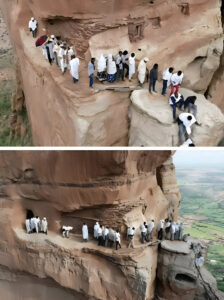

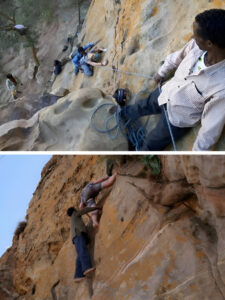
Built at an altitude of 2,580 metres (8,460 ft.), the visitors and pilgrims has to climb only on foot to reach. The entrance is reached by a steep and hazardous ascent with hand and footholds in the rock. Visitors have to cross a natural stone bridge with a sheer drop of approximately 250 m (820 ft.) on either side, and thereafter a final narrow wooden footbridge. The standing pillars are made of Enticho and Adigrat sandstones which are the last erosional remnants of a sandstone formation that once covered the Precambrian basement. Although Abuna Yemata Guh is the most dangerous and inaccessible place of worship in the world, priests have not recorded any deaths from the climb. (** “Adigrat” is a place name in Ethiopia, and it generally translates to “country of farmland” or “the country of cultivated land”. It’s associated with the Tigrayan people and has a long history of agriculture and settlement, dating back at least to the 14th century. The name is also used for the Adigrat Sandstone, a geological formation named after the town, and for the Welwalo Adigrat University Sport Club, a football team based in the area).
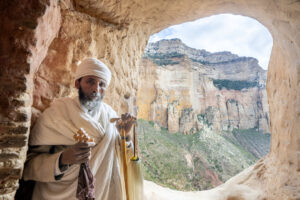
Inaccessible for centuries, the site lay undisturbed due to its remote location, visited only by wandering monks and devout Christians. This seclusion allowed much of the artwork found inside to remain in near pristine condition.
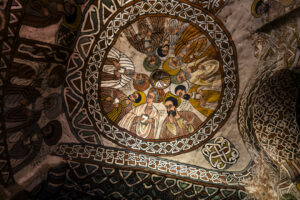
Paintings
The walls and ceilings are decorated with murals depicting biblical scenes and classic Christian iconography. Nearly every wall, dome and pillar is adorned with paintings depicting the nine saints and 12 apostles. Owing to the dry climate of the church, all paintings on the walls and domes require special preservation and maintenance. The design of the traceries in the church replicates those found in nearby churches of Gher’alta, such as Debre Tsion church (which houses more paintings depicting figures from the Old Testament than from the New Testament.
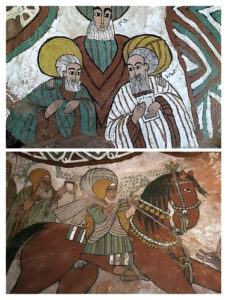
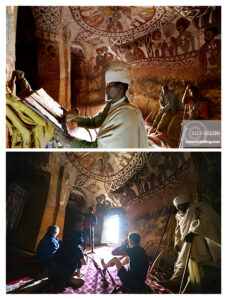
The paintings, themed around the 9 saints and 12 apostles. A 2016 X-ray study analyzing the paintings broadly supports the 15th century date, showing that most of the pigments used were sourced locally and that no underlying layer of paint existed, with the exception of the painting of Mary, where evidence of retouching was identified. (** Apostle, from Greek apostolos, means any of the 12 disciples chosen by Jesus Christ. The term is sometimes also applied to others, especially Paul, who was converted to Christianity a few years after Jesus’ death). The lack of humidity in this arid region seems to have helped preserving the paintings in good conditions.
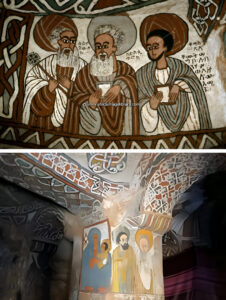
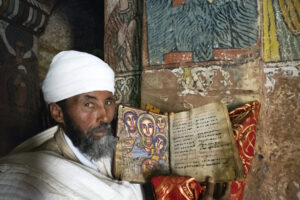
Regardless of the reason behind its inception, the rock-hewn masterpiece stands as a testament to the power of faith. The church is a treasured cultural and spiritual landmark, and its preservation is essential to understanding Ethiopia’s rich religious and artistic heritage. Abuna Yemata Guh is one of the best-preserved rock-hewn churches in Ethiopia. Its unique architecture, invaluable murals, and remote location have made it a UNESCO World Heritage Site.
Getting to this church
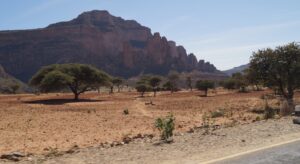
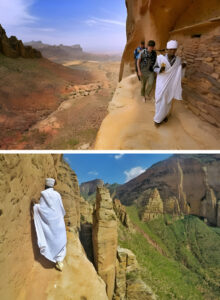
Getting to 2,580 metres above sea level is mentally challenging, requiring seriously steely nerves at times. The journey begins near Hawzen in the Tigray region, in the north of Ethiopia. To reach this church a visitor must traverse along numerous narrow pathways and then climb nearly 300 meters of cliff of sheer rock creeping by hand. The rock surface is so smooth that shoes have to be removed for a successful climb. The entire journey has to be undertaken with almost no safety measures. If you think the hardest part is over, you are greatly mistaken. Next, you face another challenge. You should use a 250-meter-long natural stone bridge flanked by hundreds of meters deep cliffs where one misstep could be fatal. Upon reaching the summit you enter the church through a cave where you find spectacular paintings preserved from the 15th century. This challenging route has traditionally been deemed a test of faith for the pilgrims seeking spiritual guidance.
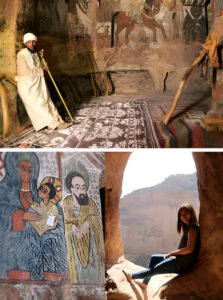
******

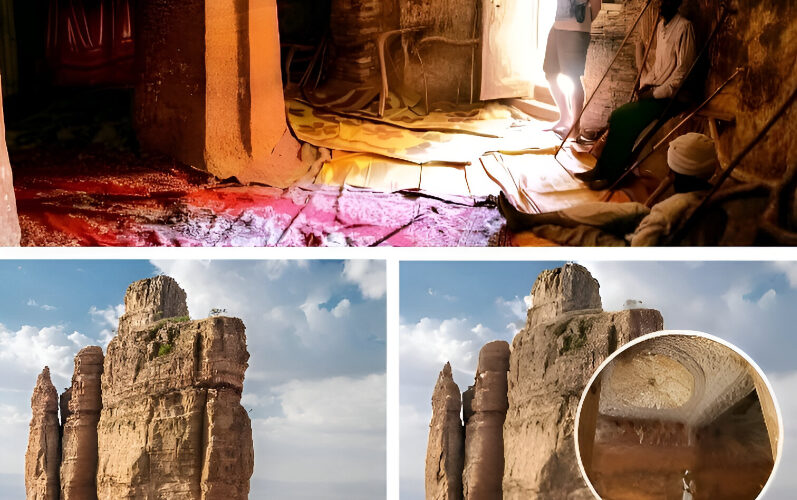

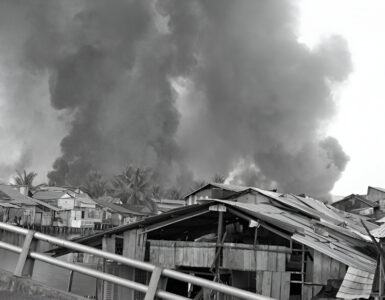
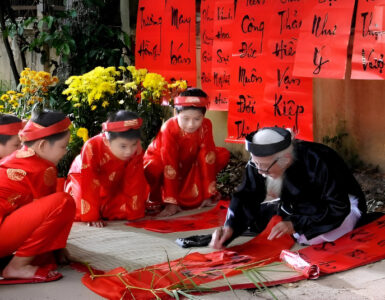










Excellent
Excellent write up. Need appreciation. You have done exhaustive study.
Congratulations.
It has enriched my knowledge profusely. Hats off to Ashim.
Excellent write up. Need appreciation. You have done exhaustive study.
একেবারেই অজানা, আগে কোনদিন শুনেছি বলে মনে হয় না।
ইথিওপিয়া বলেই হয়তো পঞ্চম শতাব্দীর এই বিরাট আশ্চর্যের কাজের গ্রন্থনা কেউ করেন নি, ভারত, চিন, মিশর, রোম, গ্রিস হলে ইতিহাসে নিশ্চয়ই থাকত।
এত মূল্যবান একটা ইতিহাস, পুরনো সংস্কৃতি, ঐতিহ্য, বা ট্যুরিজম কোথাও এর উল্লেখ নেই।
দুর্ভাগ্যজনক।
শ্রীযুক্ত অসীম দেবের লেখা পড়ে আমি অবাক। উনি করেছেন কি!
ইথিওপিয়ার উত্তরে সমুদ্র তল থেকে 2580 মিটার উচ্চতায় একটি চার্চ! তারজন্য 300 মিটার খাড়া পাহাড় বেয়ে ওঠা? তাও চার হাত পায়ে হাঁচোড় পাঁচোড় করে!
কিন্ত পৌঁছনোর পর গির্জার দেয়ালের ফ্রেস্কো দেখে মনে হয় এই ঝুঁকি নেয়া সার্থক।
আর অসীম বাবুর ভাষা ও বর্ণনা শেলী ? লা জবাব । অনাড়ম্বর সহজ সরল। অহেতুক নজর কাড়ার চেষ্টা নেই।
এর প্রমাণ আগেও ওঁর ভিয়েতনাম লেখায় পেয়েছি।
এছাড়াও বলতে হয় ওনার তথ্যনিষ্ঠ গবেষক মনের কথা।
আপনি লিখে চলুন।
It is sheer astonishing to see that a church is built at such a crazy location at an altitude of 2580 mts in Ethiopia,that too in stone cave!The church is carved out from a monolith stone in side out.It reminds me of our monolith structure at Ellora cave,Kailash.It is also very unique monolith structure but of different flavours. Reaching at Abuna Yemata Guh Church is awesome journey.How the Saints thought of building a church at such locations is first place ?
The theory of persecution of Christian saints being the reason of choosing such remote and tough location of the church doesn’t hold water.Possibility of persecution by Romans was not there as Western Roman Empire was diminished by that time.Reason may not be known to anybody now.
একেবারেই অজানা, আগে কোনদিন শুনেছি বলে মনে হয় না।
এত মূল্যবান একটা ইতিহাস, পুরনো সংস্কৃতি, ঐতিহ্য, বা ট্যুরিজম কোথাও এর উল্লেখ নেই।
দুর্ভাগ্যজনক।
অশেষ ধন্যবাদ জানাই শেয়ার করার জন্য।